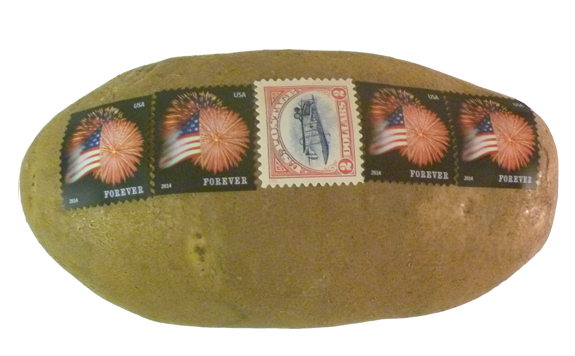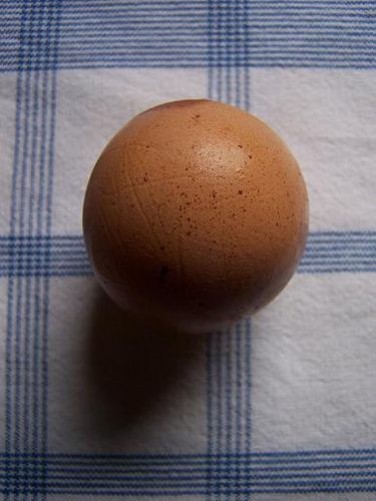Food
Music-Impregnated Milk
In this 1910 experiment, nine musicians played the "Blue Danube" waltz and other selections while farm hands milked 61 Jerseys and Holsteins.The result: "The music calmed the nerves of the cows and their udders let down all the milk in them." Also, this milk "tasted better and had a more happy effect upon the drinkers than the milk served which had not been 'music impregnated.'"
Why aren't the upscale food stores of today (like Whole Foods) selling music-impregnated milk? I'm sure there are people who would spend the extra money for it.

Source: The Louisiana Comrade - Aug 26, 1910; also printed in the Red Lake Falls Gazette (1910).
Posted By: Alex - Sat May 09, 2015 -
Comments (3)
Category: Animals, Food, Music, Experiments
Is cannibalism illegal?
Turns out there are no laws in the U.S. specifically outlawing cannibalism, except in Idaho, which has this statute on the books:CRIMES AND PUNISHMENTS
CHAPTER 50
MAYHEM
18-5003. CANNIBALISM DEFINED -- PUNISHMENT. (1) Any person who wilfully ingests the flesh or blood of a human being is guilty of cannibalism.
(2) It shall be an affirmative defense to a violation of the provisions of this section that the action was taken under extreme life-threatening conditions as the only apparent means of survival.
(3) Cannibalism is punishable by imprisonment in the state prison not exceeding fourteen (14) years.
What's going on in Idaho that inspired this law? A 2011 article in the Journal of Law and Social Deviance explains:
But what about placenta-eating (a practice that's been discussed a number of times here on WU)? Wouldn't the Idaho statute make this practice illegal? Yes, technically it would. But the same article argues that if Idaho ever tried to send anyone to prison for placenta eating (or any other non-harmful, consensual form of cannibalism — ingesting blood, etc.), their statute would probably be ruled unconstitutional as it violates a fundamental "right to privacy."
Posted By: Alex - Sat May 02, 2015 -
Comments (9)
Category: Food, Law
Follies of the Madmen #247

Original ad here.
An elegant motto for a useless product.
Posted By: Paul - Tue Apr 28, 2015 -
Comments (8)
Category: Business, Advertising, Products, Food, 1950s
Miss Pickle of 2014
Here is a new post that joins two previous ones: my post with the video about the PICKLE INDUSTRY, and Alex's post about MISS KANGAROO.It appears that at least since 1964, the union known as the Pickle Packers International has been choosing a woman to be "Miss Pickle."
The first foto below comes from THE DAILY EGYPTIAN for October 30, 1964. The second foto comes from the BUFFALO COURIER-EXPRESS for June 24, 1967, while the article comes from the TUSCALOOSA NEWS for May 7, 1967.



[Click text to enlarge]
Finally, we come to Miss Pickle of 2014, who seems more like a cartoon company mascot than a beauty-queen.

Posted By: Paul - Mon Apr 27, 2015 -
Comments (5)
Category: Beauty, Ugliness and Other Aesthetic Issues, Celebrities, Food, Pickles, Corporate Mascots, Icons and Spokesbeings, 1960s
Gaytime Raspberry Roughs
Alas, in this less-innocent year of 2015, anyone soliciting a "gaytime raspberry rough" and expecting an ice cream treat is likely to get something different than they anticipated.
Posted By: Paul - Fri Apr 17, 2015 -
Comments (8)
Category: Business, Advertising, Food, Public Indecency, 1960s, Double Entendres and Nudge-Nudge, Wink-Wink
ABOUT D@%N TIME

France has enacted a law limiting excessively thin models from working until their BMI reaches a minimum level set forth in the law. Fines and even jail time can be leveled against fashion houses and modeling agents trying to use models that are thinner than the law allows. Its about time we quit letting vanity destroy our little girls.
Posted By: Alex - Sun Apr 05, 2015 -
Comments (13)
Category: Addictions, Eating, Design and Designers, Fashion, Food, Nutrition, Health, Disease, Mental Health and Insanity
Mail a Spud
For $9.99 Mail a Spud will put stamps on a Russet potato and mail it to a recipient of your choice. No box or other packaging. Just a stamped and addressed potato. Offer available in the U.S. only.They have a FAQ on their site, but they don't answer what I thought would be the obvious question, which is: why would anyone pay them to mail a potato, when it seems easy enough to do this oneself? After all, how hard can it be to put stamps on a potato and place it in the mail. Am I missing something here? Some hidden difficulty?

Via The Presurfer
Posted By: Alex - Mon Mar 23, 2015 -
Comments (9)
Category: Food
Placenta Smoothies
Unsafe for Revulsion-prone Stomachs.
Posted By: Paul - Sun Mar 22, 2015 -
Comments (4)
Category: Body, Blood, Cannibalism, Eccentrics, Fads, Food
Wearable Banana
Dole Japan has developed what they call the "wearable banana" to be worn by marathon runners. BakeryAndSnacks.com explains:People have noticed the similarity (at least in name) between the 'wearable banana' and the 'wearable tomato project' (which I posted about last week). Is the one a rip-off of the other? Or is the similarity just an example of a simultaneous discovery of the concept of wearable fruit?
Posted By: Alex - Mon Mar 02, 2015 -
Comments (3)
Category: Food, Sports, Bananas

| Who We Are |
|---|
| Alex Boese Alex is the creator and curator of the Museum of Hoaxes. He's also the author of various weird, non-fiction, science-themed books such as Elephants on Acid and Psychedelic Apes. Paul Di Filippo Paul has been paid to put weird ideas into fictional form for over thirty years, in his career as a noted science fiction writer. He has recently begun blogging on many curious topics with three fellow writers at The Inferior 4+1. Contact Us |





